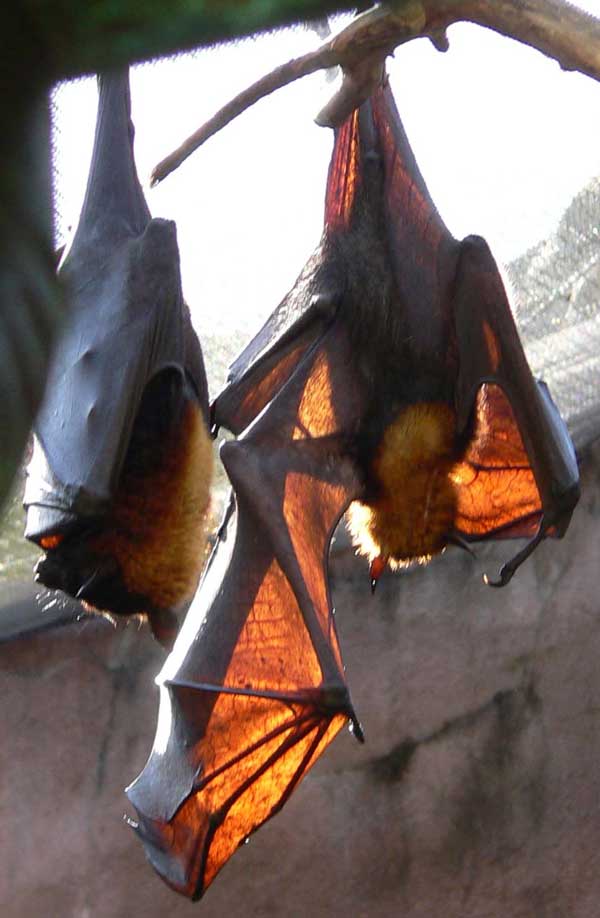Pteropus vampyrus (*) Cladus: Eukaryota Name Pteropus vampyrus Linnaeus, 1758 Type locality: Indonesia, Java. References * Linnaeus. 1758. Syst. Nat., 10th ed., 1: 31. Distribution * Vietnam, Burma, Malay Peninsula, Borneo, Philippines, Sumatra, Java, and Lesser Sunda Islands, adjacent small islands including Anak Krakatau Vernacular names ------------ The Large Flying Fox (Pteropus vampyrus), also known as the Greater Flying Fox, kalang or kalong, is a species of bat in the Pteropodidae family. It is found in Brunei, Cambodia, India, Indonesia, Malaysia, Myanmar, the Philippines, Thailand, Tonga, and Vanuatu. A recent update by the IUCN has listed the species as Near Threatened and mentioned its near-vulnerable status with the following reasons[1] "Listed as Near Threatened because this species is in significant decline (but at a rate of probably less than 30% over ten years or three generations) because it is being over-harvested for food over much of its range, and because of ongoing degradation of its primary forest habitat, making the species close to qualifying for Vulnerable under criterion A." References 1. ^ http://www.iucnredlist.org/apps/redlist/details/18766/0/full * Hutson, A.M., Racey, P.A. (Chiroptera Red List Authority) & Cox, N. (Global Mammal Assessment Team). Pteropus vampyrus. 2008 IUCN Red List of Threatened Species. Downloaded on 4 April 2009. Source: Wikispecies, Wikipedia: All text is available under the terms of the GNU Free Documentation License |
|


